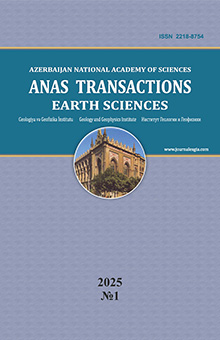№ 3,
2015
Download the article
Comparison of 3D integrated geophysical modeling in the South Caucasian and Eastern Mediterranean segments of the Alpine-Himalayan tectonic belt
Tel-Aviv University, Ramat Aviv 69978, Tel-Aviv, Israel, Fax: +972 3 6409282, E-mail: levap@post.tau.ac.il
Summary
A-
A+
South Caucasus (including Azerbaijan) and Easternmost Mediterranean (including Israel) are located within the Alpine-Himalayan tectonic belt and are characterized by complex and variable tectono-geological pattern. To study deep structure of these regions several regional interpreting profiles indicating results of 3D combined gravity-magnetic modeling were selected. Development of the initial physical-geological models (PGMs) is realized by utilization of the known surface geology, drilling data examination, previous seismic, magnetotelluric and thermal data analysis, careful investigation of the petrophysical (including paleomagnetic) data, as well as qualitative and quantitative analysis of gravity-magnetic materials. After that an iterative 3D modeling accompanied by changing geometrical boundaries of geological bodies (and assuming new targets) and varying physical properties (density, magnetization and magnetic vector inclination) is started. This process has been completed by development of final PGMs. Creating the final PGMs means not only determination of minimal difference between the observed and computed gravity and magnetic fields, but also compliance of the models with the known geological principles (complex geological PGMs of the regions under study often compose intricate structural-tectonic puzzles). The final PGMs reflect the key structural-tectonic specifics of the regional geological structure, beginning from the subsurface (hundreds of meters) up to the Moho discontinuity (tens of kilometers). The PGMs revealed primarily the boundaries of tectonic blocks, masked faults, buried uplifts of basement, occurrence and form of various magmatic bodies, some common factors controlling ore- and hydrocarbon bearing formations, and some other features. This investigation briefly summarizes the principles and possibilities of advanced 3D combined modeling of gravity and magnetic fields and presents several essential PGMs for the regions under study.
